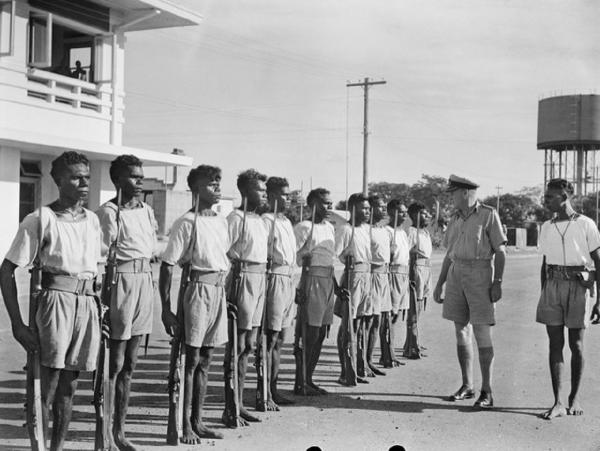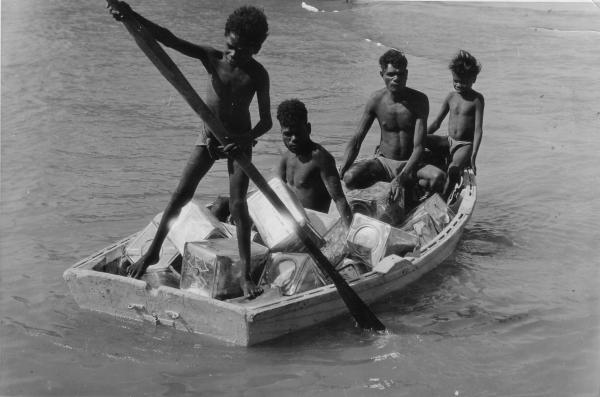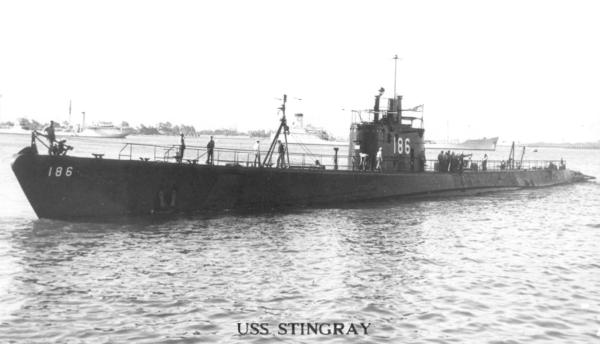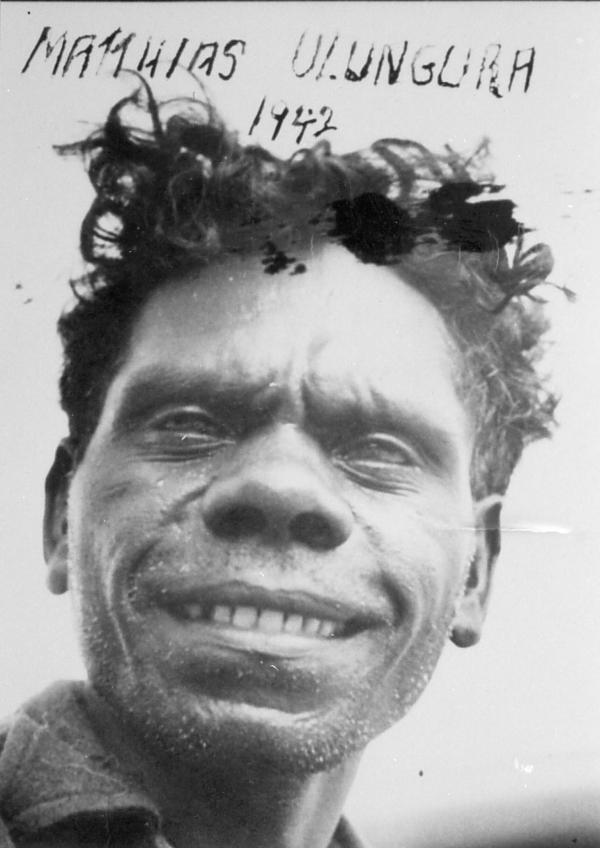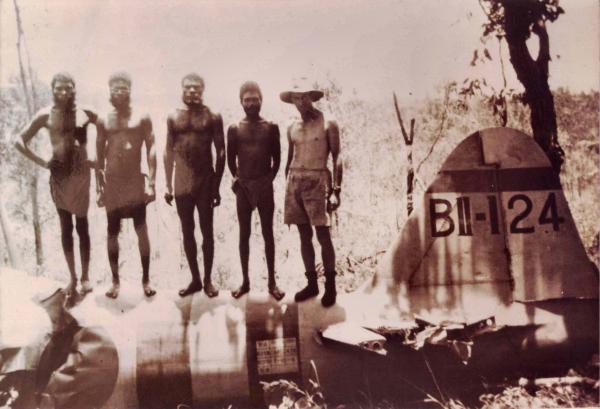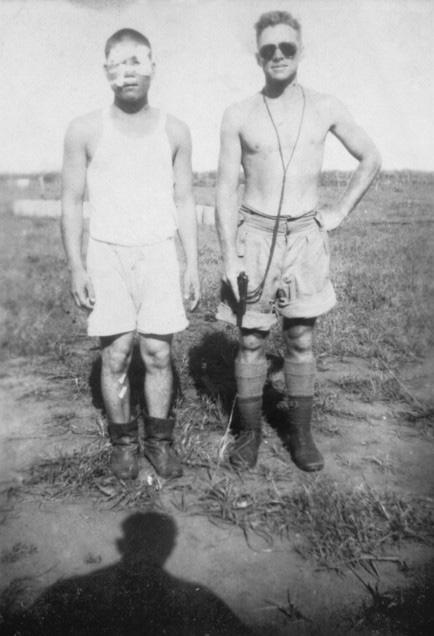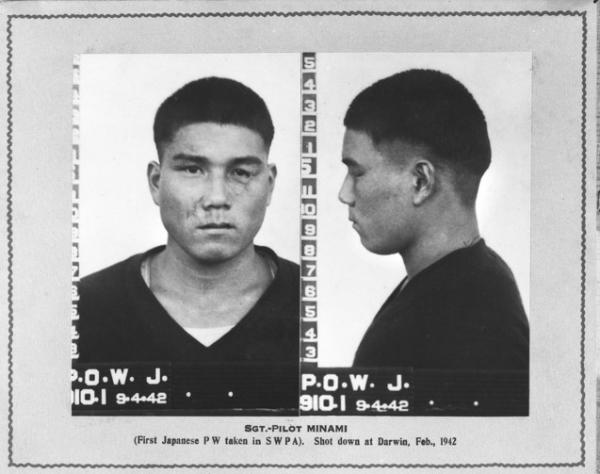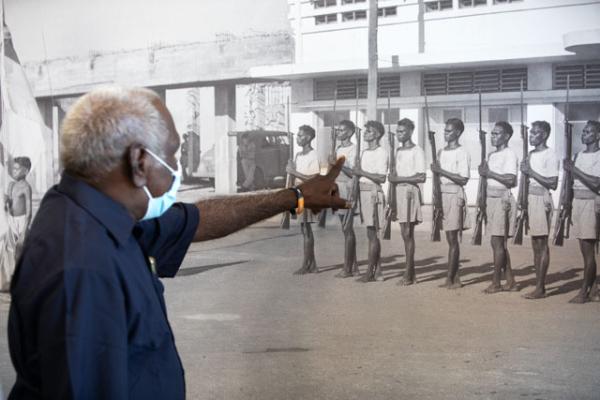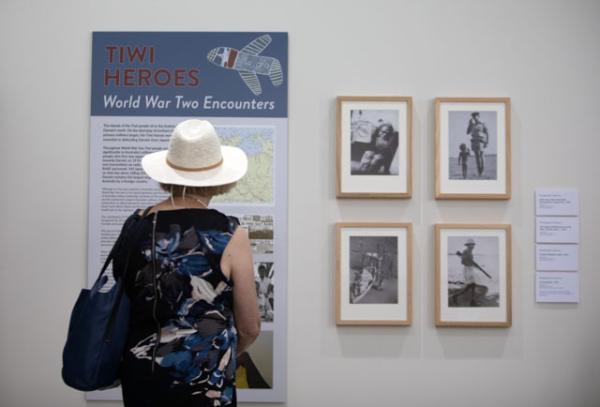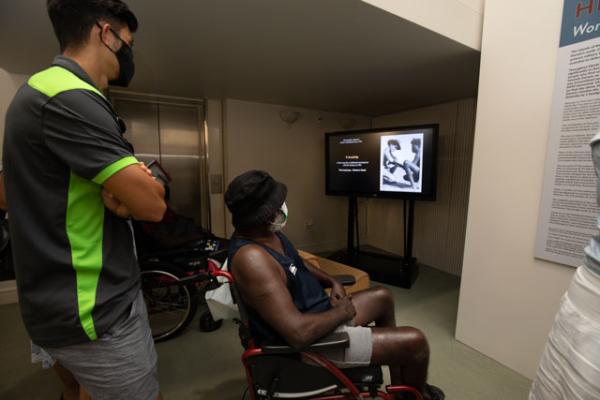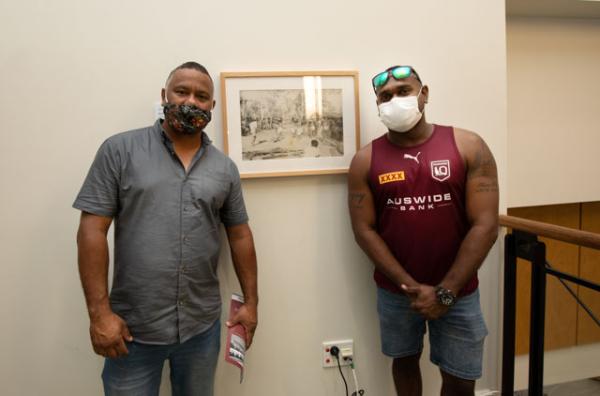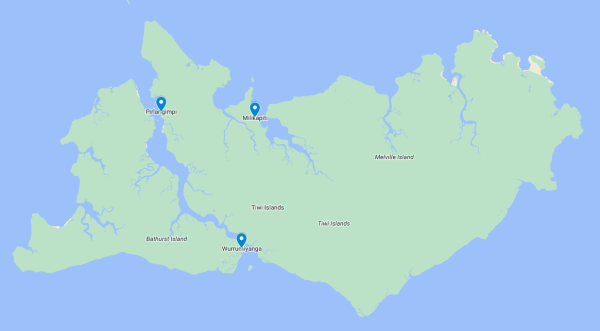Tiwi Heroes: World War Two Encounters
The islands of the Tiwi people sit in the Arafura Sea to Darwin’s north. During World War Two, the Tiwi Islands were deemed essential to defending Darwin from Japanese attack.
Throughout the war, Tiwi people contributed significantly to Australia’s military defence.
This online story demonstrates the important contribution Tiwi people made to the Australian war effort.
This story has been developed in collaboration with Tiwi cultural advisor Marie Munkara and with the support and guidance of the Tiwi Land Council, the Patakijiyali Museum, the Muluwurri Museum and other senior Tiwi translators and cultural advisors.

1. Tiwi on the Frontline
The Tiwi people’s contribution to Australia‘s defence during World War Two was significant by any measure. The Tiwi Islands was the site of numerous captures, crash landings, shipwrecks, rescues and surrenders. Tiwi people were often first responders and helped to facilitate small-scale military operations on land and sea.
Many Tiwi women (whose names were unrecorded) conducted salvage operations of enemy aircraft parts and provided bush tucker and seafood to the troops stationed on the Tiwi Islands.
With war looming in 1940, Tiwi men helped build an emergency landing ground at the mission at Wurrumiyanga and buried demolition charges along it. Later they had to repair damage caused by lightning striking the explosives.
In 1942, approximately 40 Tiwi men joined the Native Patrol coordinated by Patrol Officer J.W. Gribble. These unofficial reservists patrolled the islands and mainland coast, rescued ship-wrecked American, Filipino and Ambonese officers and discovered sea-mines. Paddy One Morangatimini piloted navy vessels between the dangerous reefs surrounding the islands. The construction and operation of Radar Station 60 near Milikapiti was assisted by Tiwi men like Alan Pupajua, who kept watch and acted as a runner between the radar and the RAAF base nearby.
Today, Tiwi people are very proud of their ancestors’ military service.
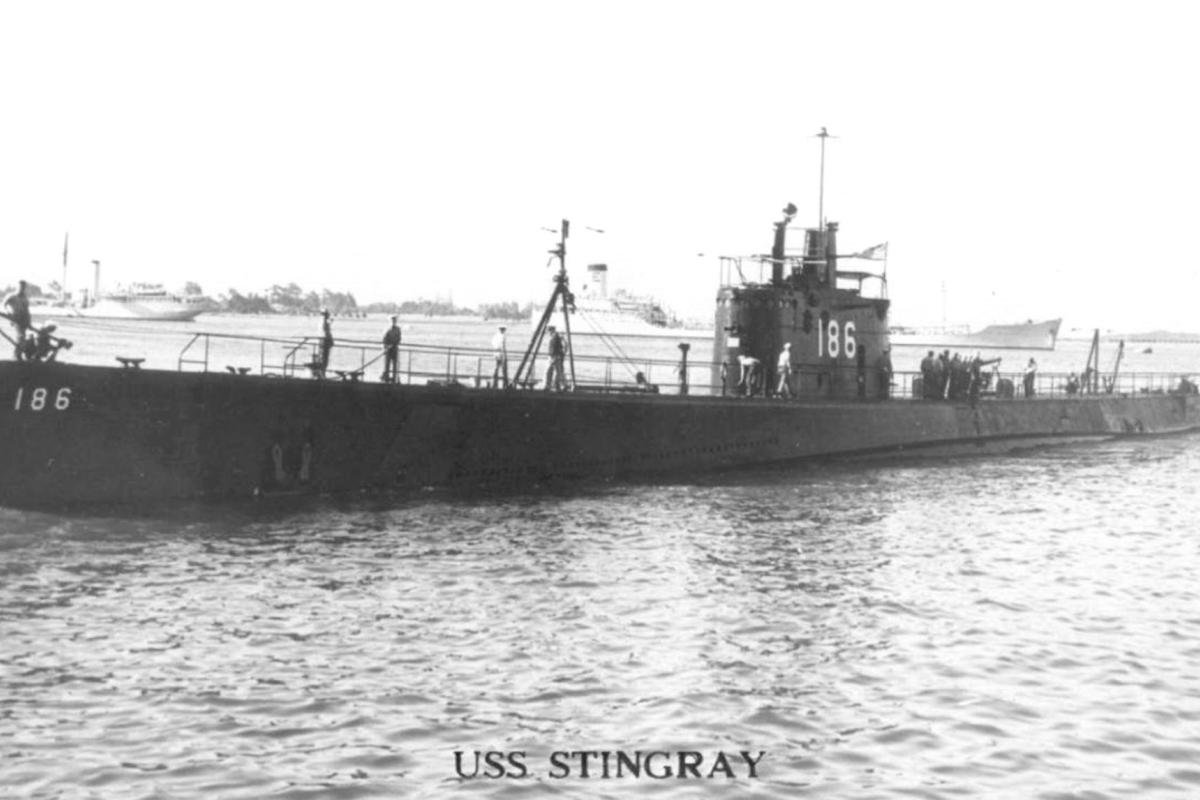
2. Submariners Charlie One and Strangler Mackenzie
Among the dozens of Tiwi men who served with the armed forces during World War Two were Charlie One Tipakalippa (Lampungmeiua) and 'Strangler' Pungautji McKenzie, who were selected for their military aptitude and their ability to speak Malay. These men crewed several submarine reconnaissance missions behind enemy lines.
The missions in which Charlie One and Strangler participated were classified. They travelled on the USS Stingray with the Allied ‘M’ Special Unit, tasked with gathering intelligence on Japanese shipping and troop units.
Charlie One and Strangler were trained machine-gunners. One night at Pulau Sakala, North-East of Java, Strangler assisted in landing the ‘M’ Special Intelligence Unit and stores while Charlie One kept watch with a Tommy gun. On one occasion they were spotted by Japanese forces and the Stingray barely escaped. Former Acting Corporal Darcy Harvey, who served with Charlie One and Strangler, remembered them as “very, very brave men”.
On one mission, their submarine USS Stingray had to lie on the bottom of the South Java Sea for thirteen hours while being depth-charged by Japanese forces. Oxygen was tight and when they surfaced at night for air, blood ran from the Tiwi men’s ears and noses.
After the war, Strangler became a sought after guide and interpreter. Tragically, he died in 1960.
As an elder, Charlie One advocated strongly for the preservation of Tiwi culture. He was renowned as a craftsman, in particular for the harpoon ropes he wove. He married three sisters of the Puruntatameri family: Dorie, Elizabeth and Gladys. Charlie One died in 1974 after an accident at Pirlangimpi.
3. Matthias Ullungura
On 19 February 1942, Tiwi man Matthias Ullungura and his family were collecting bush tucker in the mangroves on Melville Island. Little did they know that an injured Japanese fighter pilot was wandering nearby. Hajime Toyoshima, having just participated in the 19 February 1942 attack on Darwin, had crash-landed his damaged Zero fighter nearby. Seeing the camp of some Tiwi women, he picked up a baby, Clarence Puantulura. Then Matthias decided to capture him:
“I see him through the bushes and I go first. I told the other men to run away and then I sneak up quick and wait behind a tree. He walk close past me. I walked after him and grabbed his wrist near gun. He got proper big fright. I take revolver from his right side near his knee. Then I walk backwards pointing gun; I say 'Stick 'em up, right up, two hands, no more holding hands on head'. I point revolver more close.”
Matthias kept watch over Hajime all night and then delivered his prisoner to Sergeant Leslie J. Powell. Matthias had captured the first Japanese Prisoner of War taken in Australia.
For the remainder of 1942, Matthias served as a personal bodyguard to Corporal S.H. Moore. He is honoured with a statue at Wurrumiyanga today.
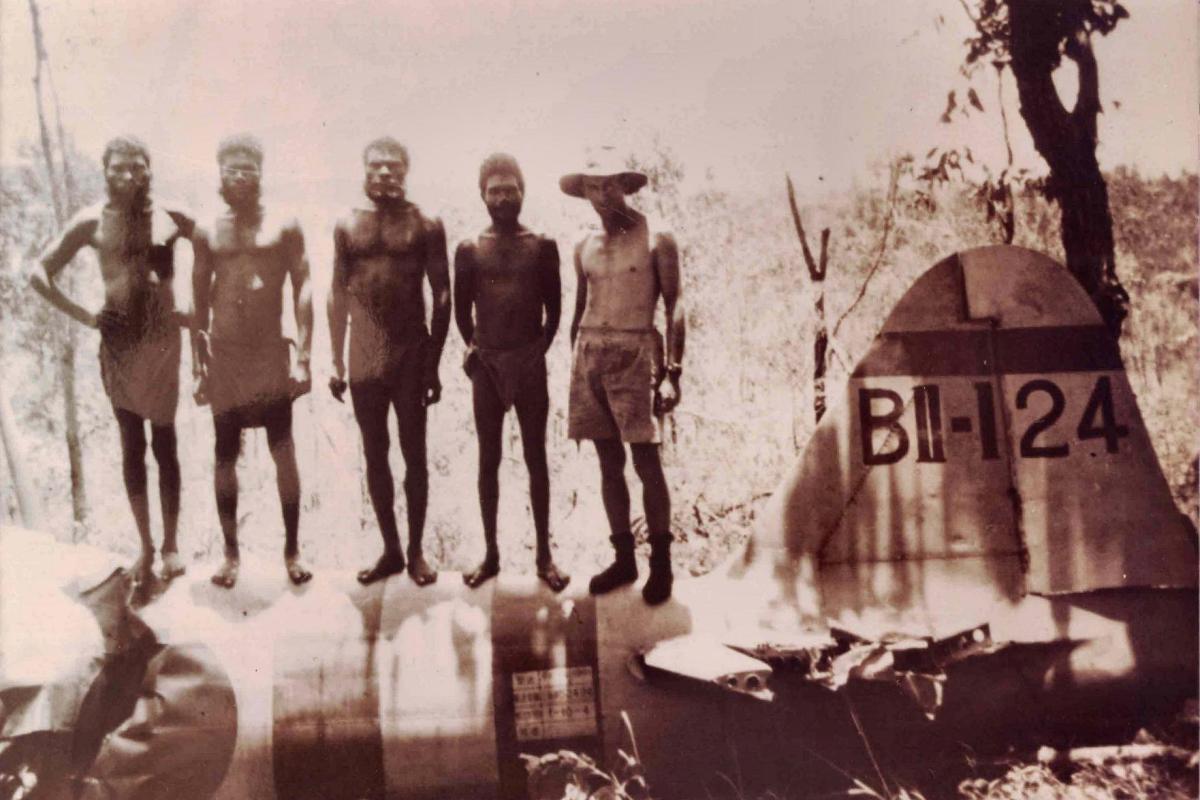
4. Hajime Toyoshima
Of the thousands of Japanese soldiers who fought in the South Pacific, one name is better known to Australians than the rest: Hajime Toyoshima, a proud 22 year old from Kagawa Prefecture.
On 19 February 1942, four Japanese carriers transporting a range of lethal aircraft moved into position some 300 kilometres north of Darwin. On the Imperial Japanese Navy carrier Hiryū, Zero BII-124 readied for take-off. Piloted by Hajime Toyoshima, Zero BII-124 took fire over Darwin. As his Zero lost oil pressure, Toyoshima was forced to crash-land on Melville Island. After his capture by Tiwi man Matthias Ullungura, Hajime told Australian authorities his name was Tadao Minami to avoid the shame of becoming the first Japanese Prisoner of War to be captured in Australia. His battered Zero fighter was the first to be captured intact by the Allies.
Eventually Hajime Toyoshima was transferred to the Cowra Prisoner of War Camp in New South Wales. At 1:45am on 4 August 1944 he sounded a bugle to signal the start of the largest and most deadly POW escape of the Second World War. In what became known as the Cowra Breakout, some 1,104 Japanese prisoners escaped and 234 died. Many expected to lose their lives. A large number suicided. It is likely that Hajime Toyoshima took his own life after being shot at by Australian guards. He was a loyal Japanese subject to the end.
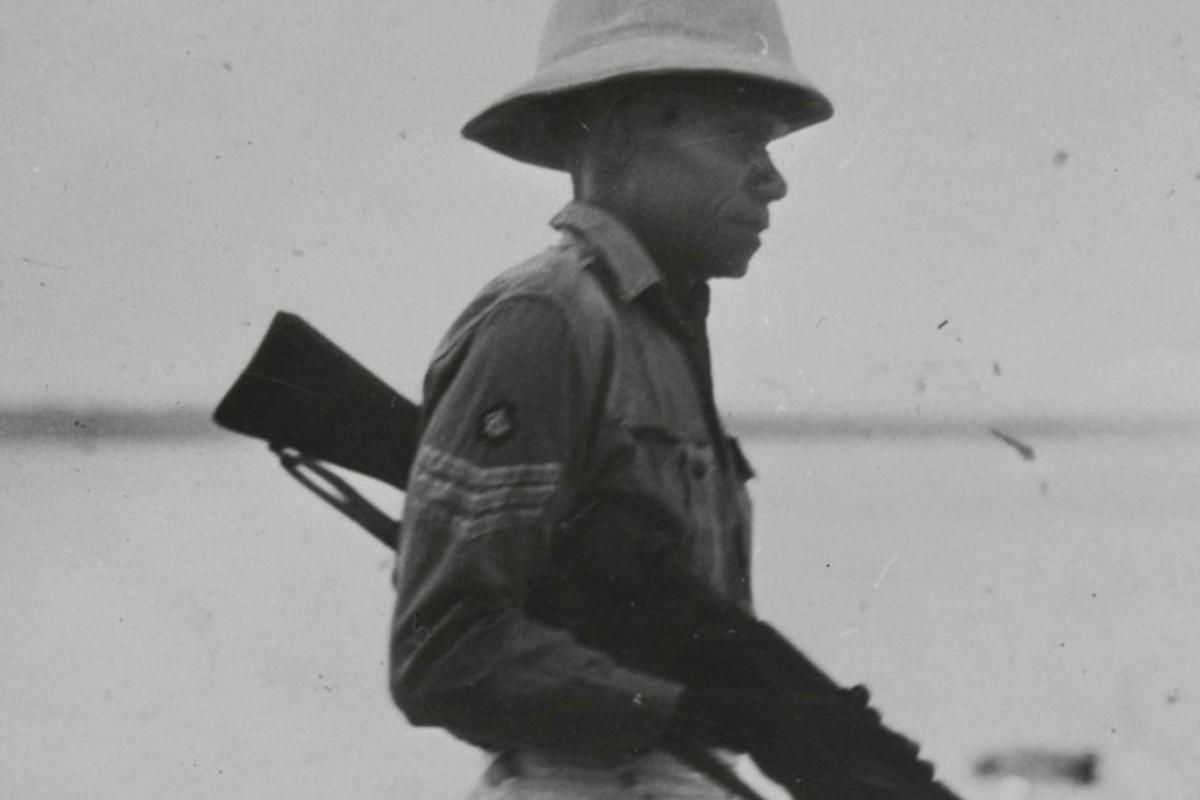
5. Louis Munkara
Few Tiwi gave as much to Australia’s defence in World War Two as Louis Purraputimali Munkara.
After walking 80 kilometres and swimming across a bay to reach the wreck of US supply ship Don Isidro at Pawunapi, north of Jikilarruwu (Cape Fourcroy), Louis and his nephews buried those who had drowned and escorted survivors back to the mission at Wurrumiyanga.
According to Benedict Munkara:
“At Cape Fourcroy we went down a landing and saw the ship was still burning and half sunk. We walked across a creek and north along a beach. We saw many people lying dead. We camped there that night and next morning buried the dead people in the sand covering them over properly; we said a prayer for them”.
While Munkara bravely helped the war effort, he also fulfilled his duties as a Traditional Owner. On more than one occasion, he told army officers and navy captains that their men’s presence in certain areas of his Country was unwanted.
Although it could not pay him, the Royal Australian Air Force gave Louis Munkara a Flight Sergeant’s uniform in recognition of his contribution.
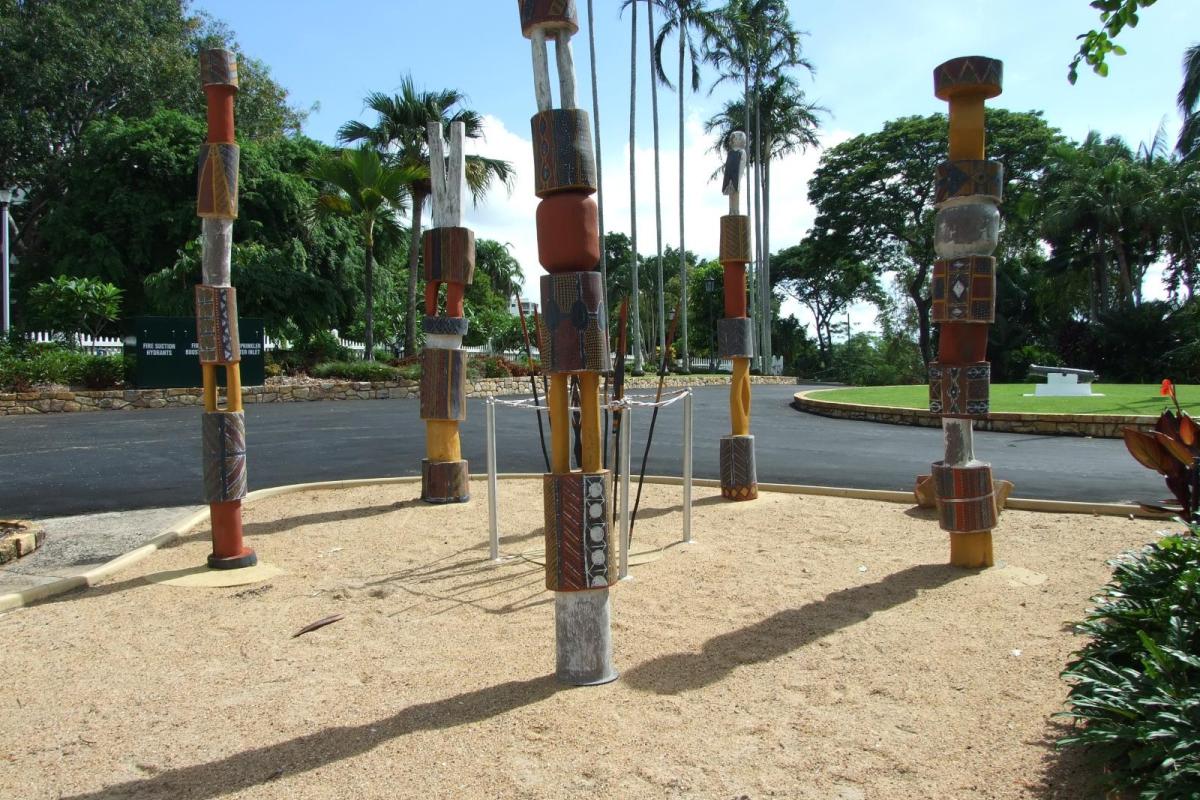
6. Tiwi Roll of Honour
The wartime service of the Tiwi men was finally recognised in 1962. Prior to this they had been regarded as 'wards' under the Welfare Ordinance Act 1953 and not Australian citizens which caused authorities a number of difficulties. Acknowledgement of war service brought attention to the injustice of people who were not permitted to vote in a country they had fought and died for. In 1962 the Commonwealth Electoral Act 1962 granted all Aboriginal and Torres Strait Islander people the option to enrol and vote in federal elections. Tiwi war heroes were officially acknowledged with Australian Service Medals and Defence Medals in recognition of their service. It would be another twenty years before Aboriginal and Torres Strait Islander people gained full equality with other Australian citizens when voting was made compulsory in 1984.
Below are the Tiwi men who served with the Royal Australian Navy and Royal Australian Air Force, 1942-43.
Name | Time Served |
| 36 months |
| 36 months |
| 24 months |
| 36 months |
| 36 months |
| 18 months |
| 36 months |
| 36 months |
| 24 months |
| 36 months |
| 36 months |
| 36 months |
| 24 months |
| 30 months |
| 36 months |
| 36 months |
| 18 months |
| 36 months |
| 30 months |
| 36 months |
| 36 months |
| 12 months |
| 30 months |
| 30 months |
| 36 months |
| 36 months |
| 36 months |
| 18 months |
| 36 months |
| 18 months |
| 18 months |
| 30 months |
| 18 months |
| 30 months |
| Unknown |
| Unknown |
* Veterans deceased at the time their medals were awarded in 1962.
Many more Tiwi contributed to the Australian war effort:
Louis Munkara
Matthias Ullungura
Fernando Urungapotemeri (injured by Japanese attack 19 Feb 1942)
Benedict Munkara
Reno Kantilla
Mariano Munkara
Clement Kerinaiua
Albert Kerinaiua
Johnny Tundingali
Jabeberu Kerinaiua
Diamond Kerinaiua
Ngawa ngaripingintayi awuta.
Lest we forget.
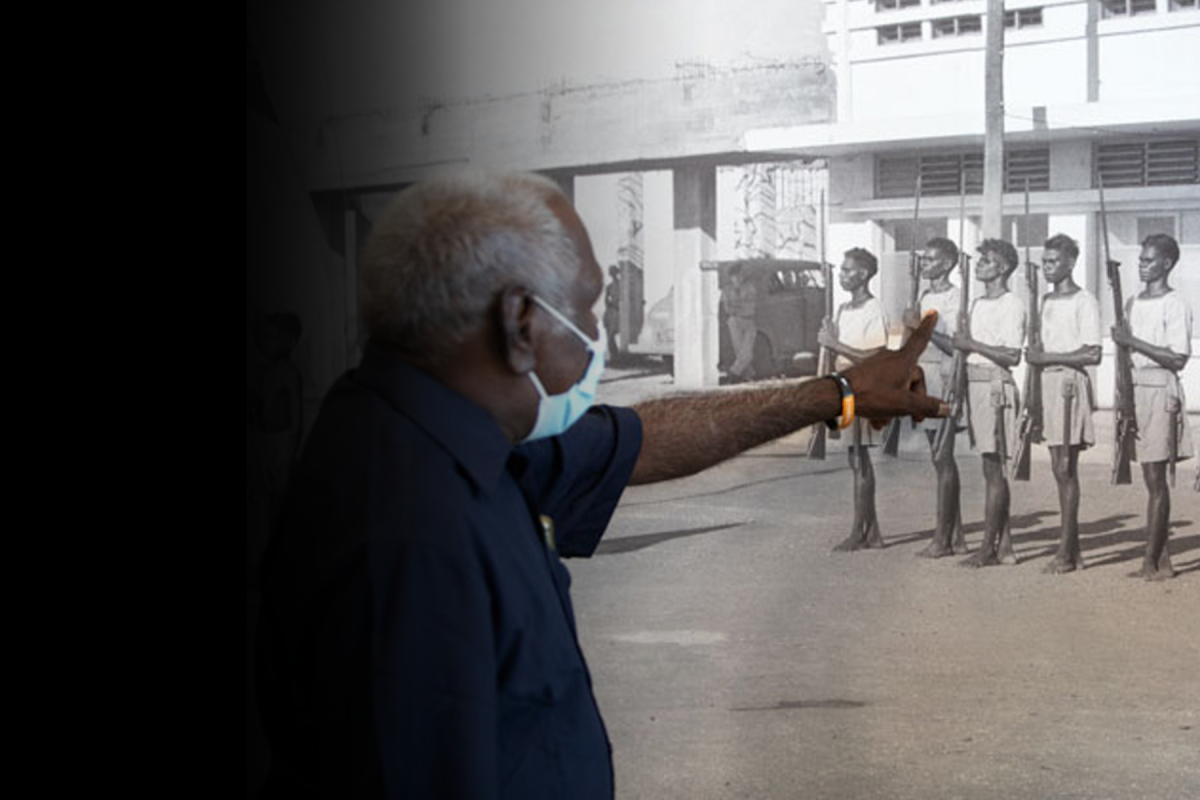
7. Tiwi Heroes Exhibition
In 2022, Library & Archives NT staged the exhibition Tiwi Heroes: World War Two Encounters. The exhibition attempted to capture the extent of the Tiwi people’s contribution to Australia’s defence during the Second World War, as well as celebrate Tiwi remembrance of their war stories today. Developed with the support and guidance of the Tiwi Land Council, the Patakijiyali Museum, the Muluwurri Museum and senior Tiwi translators and cultural advisors, Tiwi Heroes brought this unique aspect of Northern Territory history to new audiences at the time of the 80th anniversary of the Bombing of Darwin. The exhibition was opened by the Chair of the Tiwi Land Council, Gibson Farmer Illortaminni (pictured), who paid his respects to the many Tiwi elders who helped protect their country from Japanese invasion.
The exhibition featured content developed by Tiwi artists and knowledge-keepers such as Jedda Puruntatameri, Ancilla Kurrupuwu and Susan Wanji Wanji. Respected Tiwi author and film-maker Marie Munkara provided cultural advice.
- DownloadsTiwi Heroes Brochure (3.19 MB)

